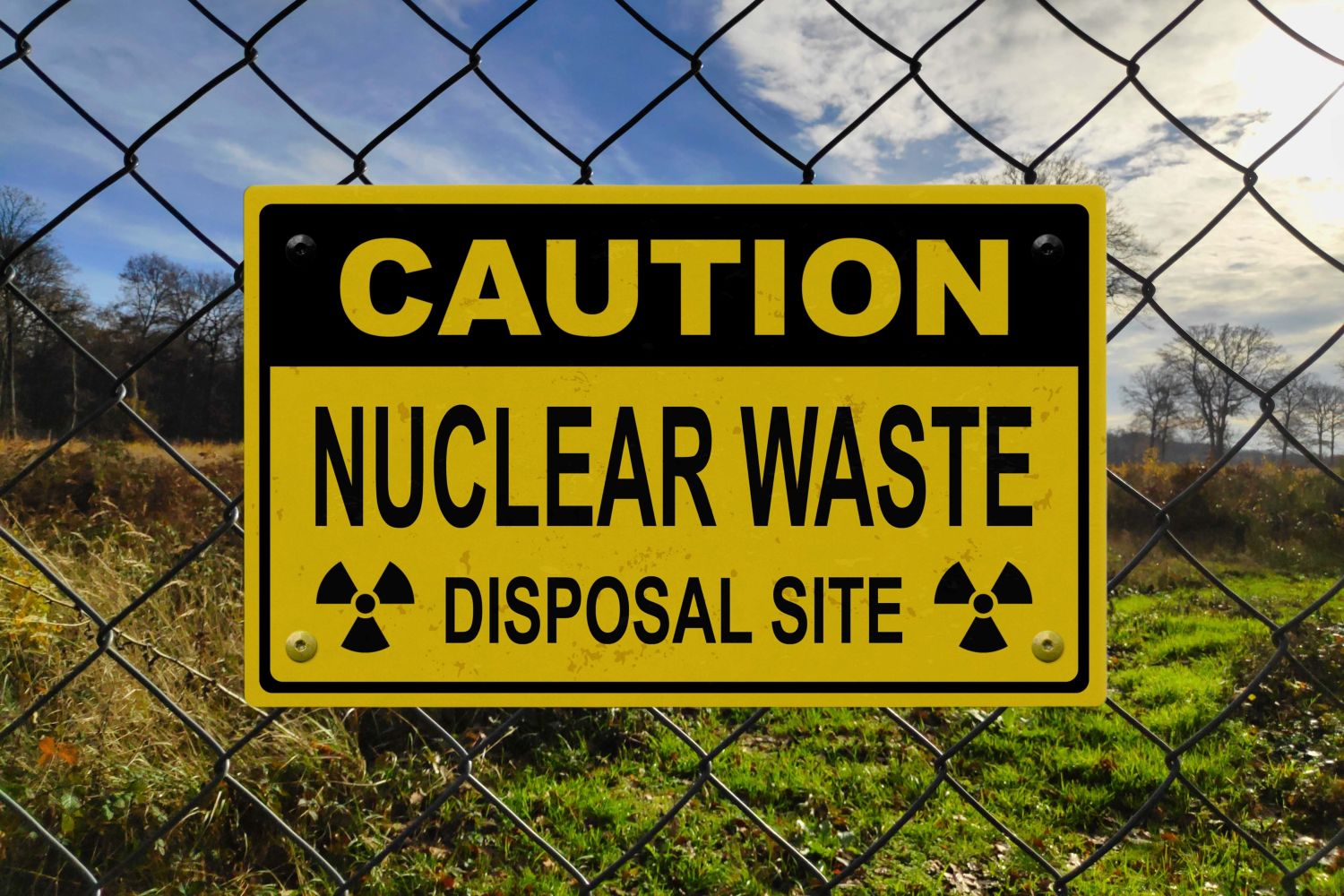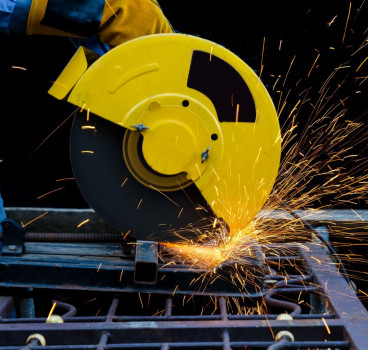The challenges of storing nuclear waste
As the world continues to focus on the challenges of managing nuclear waste, the construction of permanent storage facilities has emerged as a critical solution. Sweden is one of the countries leading the way and has recently commenced building one of the most ambitious projects ever to have started in this area - by constructing a facility designed to safely store spent nuclear fuel for 100,000 years, writes John Ridgeway.
In January this year (2025), Sweden began constructing a state-of-the-art facility in Forsmark, approximately 120 kilometres north of Stockholm. This represents only the second permanent storage solution for highly radioactive waste worldwide and here is what makes this project so significant.
It features 60 kilometres of tunnels situated 500 metres below the surface, carved into stable bedrock that has remained unchanged for millions of years. It will store 12,000 tonnes of spent nuclear fuel which will be encased in corrosion-resistant copper canisters surrounded by bentonite clay, a material that expands when wet to create an additional protective barrier.
Waste is expected to start arriving in the late 2030s, with full completion anticipated by 2080 as part of a project which underscores Sweden’s commitment to addressing the long-term storage of nuclear waste, using advanced engineering and scientific research to ensure safety and stability.
The new Swedish facility is inspired by Finland’s groundbreaking Onkalo repository, the world’s first operational deep geological storage site for spent nuclear fuel. Located on Olkiluoto Island, Onkalo is nearing completion and has already set the benchmark for other countries.
Onkalo employs a multi-barrier system to isolate radioactive material from the environment, using similar copper canisters and clay barriers and is a facility, which has been heralded as a monumental step toward solving the nuclear waste dilemma, proving that long-term storage is feasible and safe.
The global landscape
Other parts of the world have not been so successful. Despite being one of the largest producers of nuclear energy, the U.S. has faced setbacks in establishing a permanent repository. Yucca Mountain in Nevada was designated as a potential site but has faced political opposition and public resistance, leaving the project stalled.
The U.S. relies on interim storage solutions, where spent fuel is stored in dry casks or water pools at reactor sites and has been hampered by political gridlock, public opposition and concerns about geological stability, which have hindered progress.
France, a leader in nuclear energy, is developing the Cigéo project, a deep geological repository in Bure. Cigéo will store high-level radioactive waste in clay formations over 500 metres underground. Construction is already underway, with operations expected to begin by the 2030s.
Canada is advancing plans for a deep geological facility in Ontario. Their Nuclear Waste Management Organisation (NWMO) has proposed storing spent fuel in limestone formations to ensure long-term containment. NWMO has further prioritised engaging with local communities to gain public trust and support.

The UK is in the early stages of identifying suitable sites for a deep geological repository and the government is collaborating with local communities to find geologically stable locations, emphasising transparency and consent.
China has also made significant progress in nuclear energy and waste management. The Beishan Underground Research Laboratory is testing the feasibility of geological storage in granite formations and the country is also exploring advanced waste treatment technologies, including reprocessing spent fuel to extract usable materials.
Furthermore, countries like Germany, Japan and Switzerland are also actively researching and planning geological repositories, recognising the need for long-term solutions to nuclear waste management.
The need for permanent storage facilities
With the global transition to cleaner energy sources, nuclear power is increasingly seen as a viable alternative to fossil fuels. However, this growth has resulted in accumulating spent nuclear fuel, necessitating safe and secure disposal methods. Approximately 370,000 tonnes of spent nuclear fuel are stored worldwide, a figure that continues to rise.
Spent nuclear fuel remains highly radioactive for thousands of years, posing a significant risk to humans and the environment if not properly managed. Geological repositories offer a long-term solution by isolating the waste deep underground. Temporary storage solutions, while effective in the short term, are not sustainable for managing radioactive waste over millennia. Permanent facilities provide a safer, more reliable alternative.
However, the success of geological repositories depends on the stability of the chosen site. Factors such as seismic activity, groundwater flow and rock composition must be carefully evaluated to ensure long-term safety. Human error or negligence during the construction, operation, or monitoring of repositories could also compromise their integrity, leading to potential environmental contamination. In addition, any such facilities must be safeguarded against theft, sabotage, or terrorist attacks, as spent nuclear fuel contains materials that could be repurposed for malicious purposes.
For any of this to go ahead building trust with local communities is essential. Public opposition, often fuelled by safety concerns, can delay or derail projects. Constructing and maintaining geological repositories also involves significant financial investment. Ensuring cost efficiency while maintaining safety standards is a major challenge.
Given the global nature of the nuclear waste issue, international cooperation is also vital. Sharing knowledge, technology and best practices can accelerate progress and reduce costs. Developing advanced monitoring technologies can further ensure the ongoing safety and security of repositories, providing real-time data on conditions within the facility.
The construction of permanent nuclear fuel storage facilities, such as Sweden’s repository at Forsmark and Finland’s Onkalo, certainly represents a significant milestone in addressing the nuclear waste challenge. These projects demonstrate that long-term solutions are not only possible, but also essential for the continued growth of nuclear energy.
However, the journey is far from over. As other nations work to establish their own repositories, collaboration, innovation and public engagement will be key to overcoming challenges and ensuring the safe and sustainable management of nuclear waste.
By investing in advanced technologies, fostering international partnerships and prioritising safety and transparency, we can turn the nuclear waste dilemma into an opportunity for global progress. The future of nuclear energy - and its role in a sustainable world - depends on it.
Additional Blogs

How Does OSHA and HSE Enforce Their Standards?
The Occupational Safety and Health Administration (OSHA) and its U.K. counterpart, the Health and Safety Executive (HSE), are the primary bodies governing workplace safety. Their role is to reduce...
Read moreIs modular construction suffering from an identity problem?
Modular construction has been hailed as the future of the building industry for more than a decade. Promises of speed, efficiency, reduced waste and improved quality have made it a go-to headline...
Read more

The small innovations helping to transform construction
Construction’s biggest stories tend to revolve around landmark buildings, major digital breakthroughs, or the occasional crisis that pushes the industry into the headlines. Yet much of the sector’s...
Read more